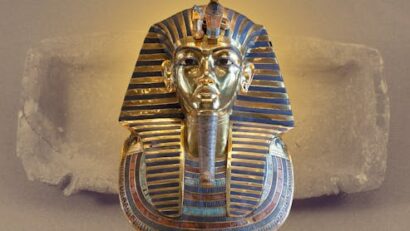
Tutankhamun: plain-looking mud trays in pharaoh’s tomb have been been key part of complex afterlife rituals
Tutankhamun’s gold burial mask and one of the plain clay trays. Roland Unger/Canva, CC BYMore than 100 years after the Läs mer…
Nyheter och länkar - en bra startsida helt enkelt |Oculus lyx vitae

Tutankhamun’s gold burial mask and one of the plain clay trays. Roland Unger/Canva, CC BYMore than 100 years after the Läs mer…

Tutankhamun’s gold burial mask and one of the plain clay trays. Roland Unger/Canva, CC BYMore than 100 years after the Läs mer…